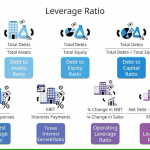In today’s dynamic business landscape, mergers and acquisitions (M&A) have become commonplace as companies seek growth opportunities and strategic advantages. But how do these deals impact company valuation? In this article, we explore the intricate relationship between M&A activities and company valuation.
The impact of mergers and acquisitions on company valuation
Mergers and acquisitions can have a significant impact on a company’s valuation. Successful mergers can lead to increased market share, expanded product portfolios, and enhanced synergies, all of which can contribute positively to a company’s valuation. Conversely, poorly executed or unfavorable M&A deals can result in the opposite effect.

Through mergers and acquisitions, companies can achieve economies of scale, diversify their offerings, and gain access to new markets. These strategic moves often generate cost savings, increased revenues, and improved profitability, all of which are key drivers of a company’s valuation.
However, it’s crucial to note that not all M&A activities automatically lead to value creation. The integration process, cultural compatibility, and proper due diligence play vital roles in determining whether the deal will result in a higher or lower company valuation.
Valuation methods used in mergers and acquisitions
When it comes to valuing companies involved in mergers and acquisitions, various methods are employed. These methods include the discounted cash flow (DCF) analysis, comparable company analysis, asset-based valuation, and the earnings multiple approach.
The DCF analysis takes into consideration the estimated future cash flows of the company and discounts them to their present value. This method provides a comprehensive view of the company’s intrinsic value and is widely used in M&A transactions.
Comparable company analysis involves comparing the target company’s financial metrics, such as revenue, profit margins, and growth rates, with those of similar companies in the industry. This method helps in determining a fair valuation range for the target company.
Asset-based valuation focuses on the company’s net assets, including tangible and intangible assets. By subtracting liabilities from the total assets, the net asset value can be calculated, providing an indication of the company’s worth.
The earnings multiple approach involves multiplying the target company’s earnings, such as EBITDA or net income, by a predetermined multiple. This multiple is typically based on the industry average or comparable transactions. The resulting figure represents an estimated valuation for the company.
Factors influencing company valuation in mergers and acquisitions
Several factors come into play when evaluating the impact of mergers and acquisitions on company valuation. These factors include industry dynamics, market conditions, the target company’s financial performance, growth prospects, and the strategic fit between the merging entities.
Industry dynamics play a critical role in determining a company’s valuation. Industries with high growth potential, favorable market conditions, and strong demand for products or services are more likely to command higher valuations.
The target company’s financial performance is another crucial factor. Companies with consistent revenue growth, healthy profit margins, and strong cash flows are generally valued higher than those with unstable financial performance.
Growth prospects also influence company valuation. Mergers and acquisitions are often driven by the desire to tap into new markets or expand existing ones. Companies with promising growth opportunities are more likely to attract higher valuations.
The strategic fit between the merging entities is essential for creating synergies and maximizing value. A well-aligned strategic vision, complementary product portfolios, and a shared customer base can contribute to a higher company valuation.
Synergies and their effect on company valuation
Synergies play a crucial role in determining the impact of mergers and acquisitions on company valuation. Synergies are the benefits that arise from the combination of two companies, such as cost savings, revenue growth, and increased market power.
Cost synergies result from the elimination of duplicate functions, streamlining of operations, and economies of scale. By reducing costs, companies can improve profitability and enhance their valuation.
Revenue synergies arise from cross-selling opportunities, expanded customer base, and enhanced market reach. These synergies can lead to increased revenues and improved market share, thereby positively impacting company valuation.
Market power synergies occur when the merged entity gains a stronger position in the market, allowing it to negotiate better terms with suppliers, achieve higher pricing power, and outperform competitors. This increased market power can contribute to a higher company valuation.
Challenges and risks in valuing companies in mergers and acquisitions
Valuing companies in mergers and acquisitions is not without its challenges and risks. One of the main challenges is accurately assessing the future performance and cash flows of the target company. Projections may be subject to uncertainties, market volatility, and changes in customer preferences.
Another challenge is the identification and quantification of synergies. Estimating the potential cost savings, revenue growth, and market power improvements can be complex and subjective, leading to valuation uncertainties.
Furthermore, valuing intangible assets, such as brand value, intellectual property, and customer relationships, can be challenging. These intangible assets may not be reflected accurately in the financial statements, requiring additional analysis and judgment.
Risks in valuing companies in mergers and acquisitions include overpaying for the target company, encountering unforeseen integration difficulties, and failing to achieve the expected synergies. These risks can result in a lower-than-anticipated company valuation and potential financial losses.
Case studies of mergers and acquisitions and their impact on company valuation
Examining case studies of mergers and acquisitions can provide valuable insights into the impact on company valuation. Case studies such as the acquisition of Instagram by Facebook, the merger of Exxon and Mobil, and the purchase of Pixar by Disney highlight the complexities and outcomes of M&A transactions.
For instance, the acquisition of Instagram by Facebook resulted in significant value creation. Instagram’s user base and innovative features complemented Facebook’s social media platform, leading to increased user engagement and advertising opportunities. As a result, Facebook’s valuation soared.
On the other hand, the merger of Exxon and Mobil faced challenges in realizing the expected synergies. Integration difficulties, regulatory hurdles, and declining oil prices affected the merged entity’s financial performance, resulting in a lower company valuation compared to the pre-merger expectations.
Strategies for maximizing company valuation in mergers and acquisitions
To maximize company valuation in mergers and acquisitions, several strategies can be employed. Conducting thorough due diligence is essential to identify potential risks, assess the target company’s financial health, and validate projected synergies.
Strategic planning and synergy analysis are critical for aligning the merging entities’ goals, identifying areas for value creation, and developing integration plans. By leveraging synergies effectively, companies can enhance their valuation.
Maintaining open communication and transparency throughout the M&A process is crucial. This helps build trust between the merging entities, ensures smooth integration, and minimizes uncertainties that could impact company valuation.
Additionally, involving experienced professionals, such as investment bankers, financial advisors, and legal experts, can provide valuable insights, guidance, and expertise in navigating the complexities of mergers and acquisitions, ultimately maximizing company valuation.
The role of due diligence in assessing company valuation in mergers and acquisitions
Due diligence plays a crucial role in assessing company valuation in mergers and acquisitions. It involves a comprehensive examination of the target company’s financial statements, operations, contracts, legal obligations, intellectual property rights, and other relevant aspects.
During due diligence, potential risks, opportunities, and synergies are identified and evaluated. This process helps mitigate valuation uncertainties by providing a clear understanding of the target company’s assets, liabilities, growth prospects, and overall financial health.
Thorough due diligence enables the acquirer to make informed decisions, negotiate better terms, and accurately assess the target company’s worth. It minimizes the chances of overpaying for the target company and enhances the acquirer’s ability to maximize company valuation through the M&A transaction.
How is company valuation calculated?
Calculating the valuation of a company is a critical aspect of understanding its worth in the market. Whether you’re an investor, an entrepreneur, or a business owner, knowing how to estimate a company’s value is essential for making informed decisions. It allows you to evaluate potential investments, negotiate deals, and assess the financial health of a business.

Common methods of company valuation
Valuing a company involves a range of methods and techniques. Each method has its strengths and limitations, and the choice of approach depends on various factors such as the industry, the company’s stage of growth, and the availability of financial data. Here, we will explore the three common methods used to calculate company valuation: earnings-based valuation methods, asset-based valuation methods, and market-based valuation methods.
Earnings-based valuation methods
Earnings-based valuation methods focus on a company’s financial performance to determine its worth. One of the most commonly used methods is the Price/Earnings (P/E) ratio, which compares a company’s stock price to its earnings per share. The P/E ratio gives investors an idea of how much they are willing to pay for each dollar of earnings generated by the company.
Another approach is the discounted cash flow (DCF) analysis, which estimates the present value of a company’s future cash flows. By discounting the expected cash flows back to their present value, the DCF analysis provides a comprehensive view of a company’s value. This method is particularly useful for companies with stable and predictable cash flows, as it allows for a detailed projection of future financial performance.
Asset-based valuation methods
Asset-based valuation methods focus on a company’s balance sheet to determine its value. These methods calculate the company’s worth based on its tangible and intangible assets. Tangible assets include physical assets like real estate, inventory, and equipment, while intangible assets include intellectual property, patents, and trademarks.
Two commonly used asset-based valuation methods are the book value method and the liquidation value method. The book value method calculates the value of a company by subtracting its liabilities from its assets, providing a snapshot of the company’s net worth as recorded on its balance sheet. On the other hand, the liquidation value method estimates the value of a company’s assets if it were to be liquidated, often yielding a lower valuation as it assumes a forced sale scenario.
Market-based valuation methods
Market-based valuation methods use comparable transactions and market multiples to determine a company’s value. These methods rely on the assumption that the market is an efficient mechanism for pricing companies. The market approach compares the company’s valuation to similar companies that have recently been sold or have issued public stock.
The multiples used in this approach can include the price-to-earnings ratio, price-to-sales ratio, or enterprise value-to-EBITDA ratio. This method provides a benchmark for valuing a company based on the market’s perception of its worth, making it particularly useful in industries with active M&A markets or frequent IPOs.
Factors influencing company valuation
Several factors influence a company’s valuation. These factors can vary depending on the industry, the company’s competitive position, and the economic environment. Some key factors to consider include the company’s revenue growth rate, profit margins, market share, competitive advantage, management team, and potential for future expansion. Additionally, macroeconomic factors such as interest rates, inflation, and industry trends can affect a company’s valuation. It is important to consider these factors when estimating a company’s worth to ensure a comprehensive analysis.
Importance of company valuation
Understanding company valuation is essential for various stakeholders. For investors, it helps to identify potential investment opportunities and assess the risk and return profile of a company. Entrepreneurs and business owners can use valuation techniques to determine the worth of their business, which can be crucial when seeking funding, selling the company, or planning for succession. Valuation also plays a significant role in mergers and acquisitions, allowing companies to negotiate fair deals and allocate resources effectively. Overall, company valuation provides valuable insights into a company’s financial health, growth potential, and value in the market.
Understanding the valuation process
The valuation process involves a series of steps to estimate a company’s value accurately. It begins with gathering relevant financial information, such as historical financial statements, forecasts, and industry data.
The next step is to select the appropriate valuation method based on the company’s characteristics and objectives. Once the method is chosen, the valuation analyst applies the relevant formulas and calculations to arrive at an estimated value. The final step is to review and interpret the results, considering the limitations and assumptions of the chosen method. It is important to note that valuation is not an exact science and involves subjective judgments and assumptions.
Seeking professional help for company valuation
Valuing a company can be a complex and time-consuming process, requiring expertise in finance, accounting, and industry analysis. Therefore, it is often beneficial to seek professional help when conducting a company valuation.
Professional valuation experts have the knowledge and experience to navigate the intricacies of valuation methods, interpret financial data accurately, and provide unbiased and objective opinions. They can also assist in addressing any potential challenges or discrepancies that may arise during the valuation process. By consulting professionals, stakeholders can ensure a comprehensive and reliable valuation of a company.
Conclusion and key takeaways
Company valuation is a crucial aspect of understanding a company’s worth in the market. By using various methods such as earnings-based, asset-based, and market-based approaches, stakeholders can estimate a company’s value and make informed decisions. Factors such as revenue growth, profit margins, market share, and competitive advantage influence company valuation.
Seeking professional help can provide valuable insights and ensure an accurate and comprehensive valuation. By understanding the intricacies of company valuation, stakeholders can gain a deeper understanding of a company’s potential and make strategic decisions with confidence.
Mergers and acquisitions can significantly impact a company’s valuation. Successful deals can lead to increased market share, expanded product portfolios, and enhanced synergies, all contributing positively to company valuation. However, not all M&A activities automatically result in value creation. Factors such as integration, cultural compatibility, and due diligence play crucial roles in determining the impact on company valuation.
Various valuation methods, including DCF analysis, comparable company analysis, asset-based valuation, and earnings multiples, are used in mergers and acquisitions. These methods help assess the target company’s worth and determine a fair valuation range.
Factors influencing company valuation in mergers and acquisitions include industry dynamics, market conditions, financial performance, growth prospects, and strategic fit. Synergies, such as cost savings, revenue growth, and market power improvements, can significantly impact company valuation.
Valuing companies in mergers and acquisitions comes with challenges and risks, including uncertainties in future performance, synergy quantification, and intangible asset valuation. Case studies provide insights into the complexities and outcomes of M&A transactions.
Strategies for maximizing company valuation in mergers and acquisitions involve thorough due diligence, strategic planning, open communication, and involving experienced professionals. Due diligence plays a critical role in assessing company valuation by identifying risks, opportunities, and synergies.
In conclusion, mergers and acquisitions can have a profound impact on company valuation. By understanding the intricacies, employing sound valuation methods, and mitigating risks, companies can navigate the M&A landscape successfully and maximize their valuation.






